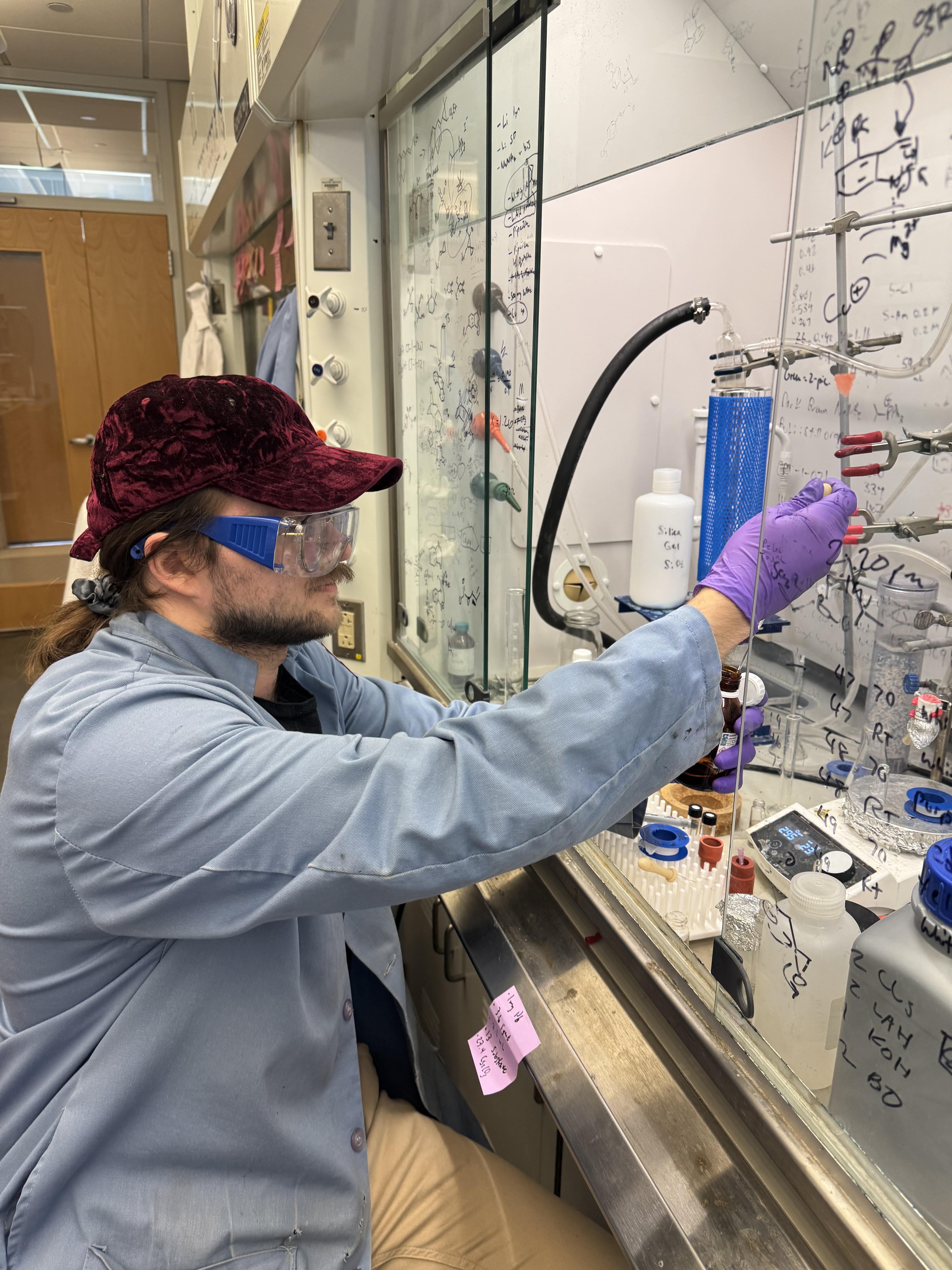Chemists Unlock Route to Tiny Molecular Shapes That Could Power Next-Gen Medicines

Researchers in the Department of Chemistry have discovered a new way to make two rare molecular shapes, called spiro[2.2]pentanes and vinylcyclopropanes, more easily and with more design flexibility. The former can make a drug bind more tightly and precisely to its target in the body and, in some cases, adding one has made a drug dozens of times more potent.
August 26, 2025 I By Dave DeFusco
Some molecular shapes are so small and tense that making them is like trying to bend a steel spring into a perfect square without snapping it. If chemists can pull it off, these unusual shapes can transform the way medicines work.
Researchers in the Department of Chemistry at UNC-Chapel Hill have discovered a new way to make two such rare shapes, called spiro[2.2]pentanes and vinylcyclopropanes, more easily and with more design flexibility. The research, led by Ph.D. student Charles Reece Teeples and Associate Professor Sidney Wilkerson-Hill, was recently published in the journal Organic Letters.
Spiro[2.2]pentanes look like two tiny triangles sharing a single corner—a rigid, compact structure that scientists can attach to other chemical pieces. Because of their locked shape, they can make a drug bind more tightly and precisely to its target in the body. In some cases, adding one has made a drug dozens of times more potent.

The problem is they’re very hard to make. Their “spring-loaded” structure means traditional methods often fail or only produce a limited variety. The Carolina team tackled the challenge by using sulfones, which are common, stable molecules, as safe stand-ins for unstable and highly reactive particles called carbenes.
They tried two different strategies:
- Combining sulfone reagents with methylenecyclopropanes, which are small ring-shaped molecules with an extra reactive bond.
- Combining sulfones with styrenes—common aromatic molecules—using a special “cyclopropyl sulfone” design.
The first method worked as planned, creating 16 types of spiro[2.2]pentanes in good amounts, with the ability to swap in different chemical features.
The second method surprised them. Instead of spiro[2.2]pentanes, it produced vinylcyclopropanes, another rare and valuable shape that’s also used in making medicines and complex natural products.
“We were aiming for one product, but the chemistry decided to take a different path,” said Teeples, lead author of the study. “That’s part of what makes research exciting. You discover something you weren’t looking for.”
To understand the detour, the team ran tracking experiments that replaced certain hydrogen atoms with a heavier version called deuterium. This helped show that a key “atom shuffle” step happens before the final ring forms.
Even though the original goal was to make more spiro[2.2]pentanes, the unexpected new way to make vinylcyclopropanes is just as exciting, said Teeples. Both shapes are in high demand among drug designers for their precision and rigidity, which can improve how a medicine works in the body.
“This research gives medicinal chemists a new tool,” said Wilkerson-Hill, who is principal investigator on the study. “It lets us make complex shapes using sulfone compounds, which are not as explosive and toxic as the traditionally used diazo compounds.”
Next, the researchers plan to make the reactions even gentler and more selective so they can be used for sensitive or large-scale applications.
As Teeples put it, “A new method to make these unusual building blocks can be enabling to drug discovery campaigns, as well as the broader synthetic community.”

